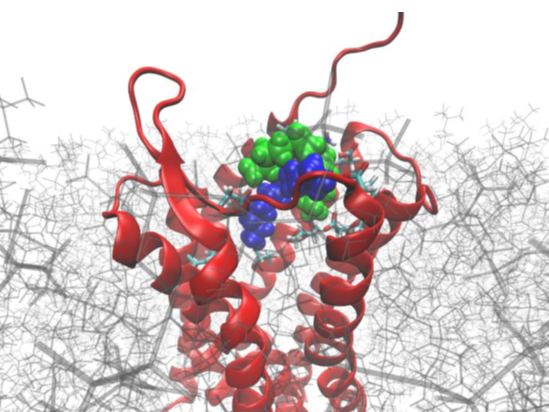CRC scientists reveal possible mechanism behind co-receptor biased HIV-1 transmission during sexual intercourse
HIV-1, the causative agent of the acquired immunodeficiency syndrome (AIDS), mainly spreads through unprotected sexual contact, thereby initially infecting CD4+ T cells by binding to the CD4 receptor. However, an additional co-receptor is required for subsequent fusion of the viral membrane with the target cell. The main co-receptors for HIV-1 infection are the two G-protein coupled receptors CCR5 or CXCR4. Intriguingly, productive HIV-1 transmission between human are almost exclusively caused by strains that use the CCR5 receptor, whereas viruses that use CXCR4 as a co-receptor are largely restricted. The reason behind this selectivity in transmission has long been a subject of debate.
Recently, a ground-breaking study published in Science Advances has shed light on this phenomenon. Collaborating researchers from Germany, France, and Belgium have discovered that certain polyamines found naturally in semen in large quantities, i.e. spermine and spermidine, specifically bind to CXCR4, but not CCR5. In cell-based experiments, the presence of these polyamines was found to completely inhibit CXCR4-tropic HIV-1 infection, while CCR5-tropic HIV-1 strains were not affected. The direct binding of spermine to CXCR4 was further confirmed through surface plasmon resonance and molecular modelling techniques. Moreover, CXCR4-tropic HIV-1 infection was largely blocked in the presence of seminal plasma containing the polyamines, but still allowed infection with CCR5-tropic strains. This finding suggests that the presence of polyamines in semen can explain the bias observed in HIV-1 tropism during the initial stages of infection during male-to female sexual transmission.


